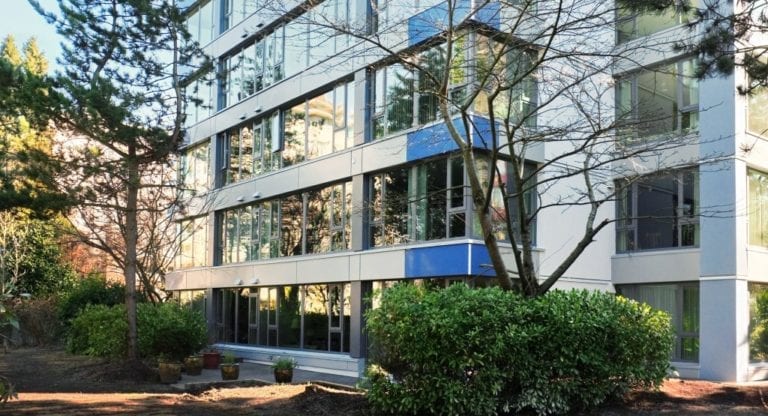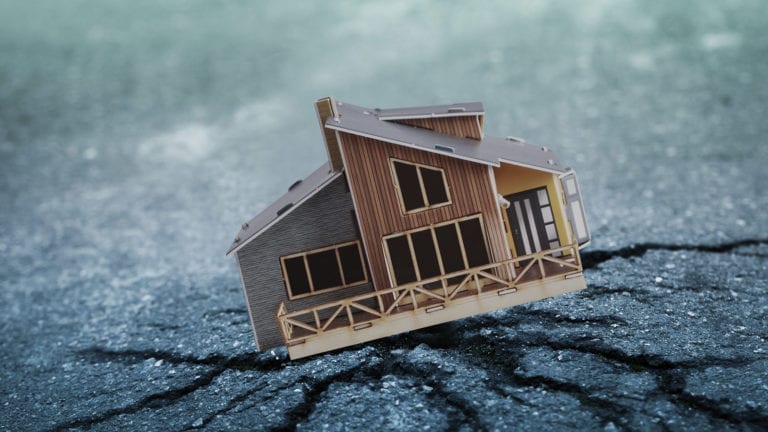“Sometimes, the most dangerous things are those that are hiding in plain sight.”
We have all seen those PhotoShop images of an iceberg with the tip floating above the visible surface of the water and a huge mass lurking underneath. In reality, however, we can never “see” the entire iceberg — part of it is always out of sight.
Our buildings are constructed on land so how do we get to “see” the size and shape of the stuff hiding under (and inside) our buildings? First, we should refer to them as “landbergs” rather than “icebergs”.
Just as the Titanic was sunk by an iceberg, so too can buildings be seriously affected by failing to be aware of these landbergs and knowledge on how to safely and cost effectively navigate around them.
In my 20+ years working on over 1,000 buildings of various types in different locations across North America, I have found that these “Landbergs” are potentially made out of five things.
1. Latent Warranty Defects
This first group of issues applies to younger buildings (not more than a few years old) or recently renovated buildings (in the period after an asset has been replaced, such as a new roof or boiler).
Latent means that something is lying dormant or has not yet developed itself to the point that we can detect it. Whereas a “patent defect” is an issue that is immediately obvious to us, a latent defect “hides” until it reveals itself at a later date, sometimes after the warranty has expired.
How do we protect ourselves?
- Know which of your assets are still covered under warranty and their expiration dates, which should be recorded in a Schedule of Warranty Expirations (SOHE).
- Commission a warranty review in sufficient time prior to expiration of the warranty period. A qualified team should be able to observe tell-tale signs of warranty issues that have not yet manifest themselves. We want to catch these patent defects as early as possible so that we can preserve our rights as consumers.
We need to be in the warranty period for these problems to be classed as a warranty defect.
2. Concealed Conditions
Once we move beyond the in-warranty period, we encounter some other types of issues, which apply to buildings of any age.
A concealed condition is something happening under the surface (of something else) and cannot be readily observed without removing outer layers. For example, what is happening inside the walls and floor cavities?
Here are a few examples to illustrate some concealed conditions in buildings: rotted wood beams and posts; corrosion to concealed metal fasteners; mould in wall and ceiling cavities; water saturated insulation in attics and walls cavities.
How do we protect ourselves?
- Major maintenance activities will help to flush out some of these conditions. For example, predictive maintenance technologies, such as thermographic scans, can reveal what is going on below the surface off the roof and inside the wall cavities. These scans should be conducted at intervals recommended by a consultant.
- It is important to know the exposure conditions of your building. For example, where are the locations where water can potentially enter into the building?
- As the building ages, commission a condition assessment. Typically these are conducted every 10 or so years or at the first signs of problems emerging with one of the assets
3. Covert Failures & Potential Failures
These are very similar to a concealed condition but the failure remains undetected until revealed by either testing or, more critically, once a demand is placed on the item to function as intended.
Here are a few examples to illustrate some covert failures: A seized valve that has never been tested to confirm that it closes – we only discover the problem when we shut down the water to carry out some other repair; polybutylene piping.
How do we protect ourselves?
- Conduct major maintenance activities, such as shutting down the water periodically to test that all valves are working properly.
- Balancing tests are also helpful as part of retro-commissioning and re-commissioning procedures.
4. Back-of-House Issues
This is something happening in a place that nobody ever (or seldom) looks. Unlike concealed conditions, we do not need to do any destructive testing to reveal the problem, we just need to go into this remote area. We immediately discover these things when we go into these places.
Here are a few examples to illustrate some back-of-house issues: Neglect of floor finishes in a stairwell, since it is never utilized; burnt out light bulbs in a remote electrical closet; an inoperable appliance in the amenity room that nobody knows about since the appliance is never used; water in a crawl space.
How do we protect ourselves?
- Know all the confined spaces (such as crawl spaces) and remote rooms in the building (small service closets and utility rooms).
- Ensure that all service rooms are checked periodically.
- Test all assets periodically, even if they are seldom needed.
5. Grandfathered (Legacy) Issues
This issue applies to older buildings and relates to days gone by. Codes and standards change over the years. A good examples is asbestos, which was at one time a very popular building material but later found to be unsafe.
Here are a few examples to illustrate some grandfathered issues, which represent different form of legal obsolescence.
- Buried elevator cylinders without PVC protection (up the late-1980s)
- Lead-based paint (up to the early-1960s)
- Asbestos in roofs, floors and other stuff (up to the late-1970s)
- Aluminum wiring (up to the early-1970s)
- Buried fuel tanks with single wall protection
- PCB- containing fluorescent light ballasts (up to the late-1970s)
Disclaimer: this is not an exhaustive list and is intended for general reference only. Readers should seek advice from professionals with domain knowledge on different systems in buildings.
In an upcoming blog post I will address matters of “fading assets” and obsolescence in more detail. In the meantime, here are some links for those who might want to learn more:
- Technological Obsolescence (eg. newer technologies)
- Economic Obsolescence (eg., energy efficiency)
- Legal Obsolescence (eg. new codes and standards)
- Functional Obsolescence (eg. new space requirements)
- Style Obsolescence (eg. tired and dated finishes)
How do we protect ourselves?
- Know the age of your building and the vintage of each of your assets.
- Develop an inventory of your assets (with professional help) and identify potentially critical assets that are susceptible to different forms of obsolescence.
- Use tags to identify certain assets, such as asbestos containing materials. This will ensure that they are left undisturbed.
- Seek advice from a professional on the deadlines for removal of some of these items.
Disclaimer: This blog post is intended as a simple introduction to a highly complex subject. It should not be used to make decisions. Please contact our experts at RDH or your qualified consultant for information.


